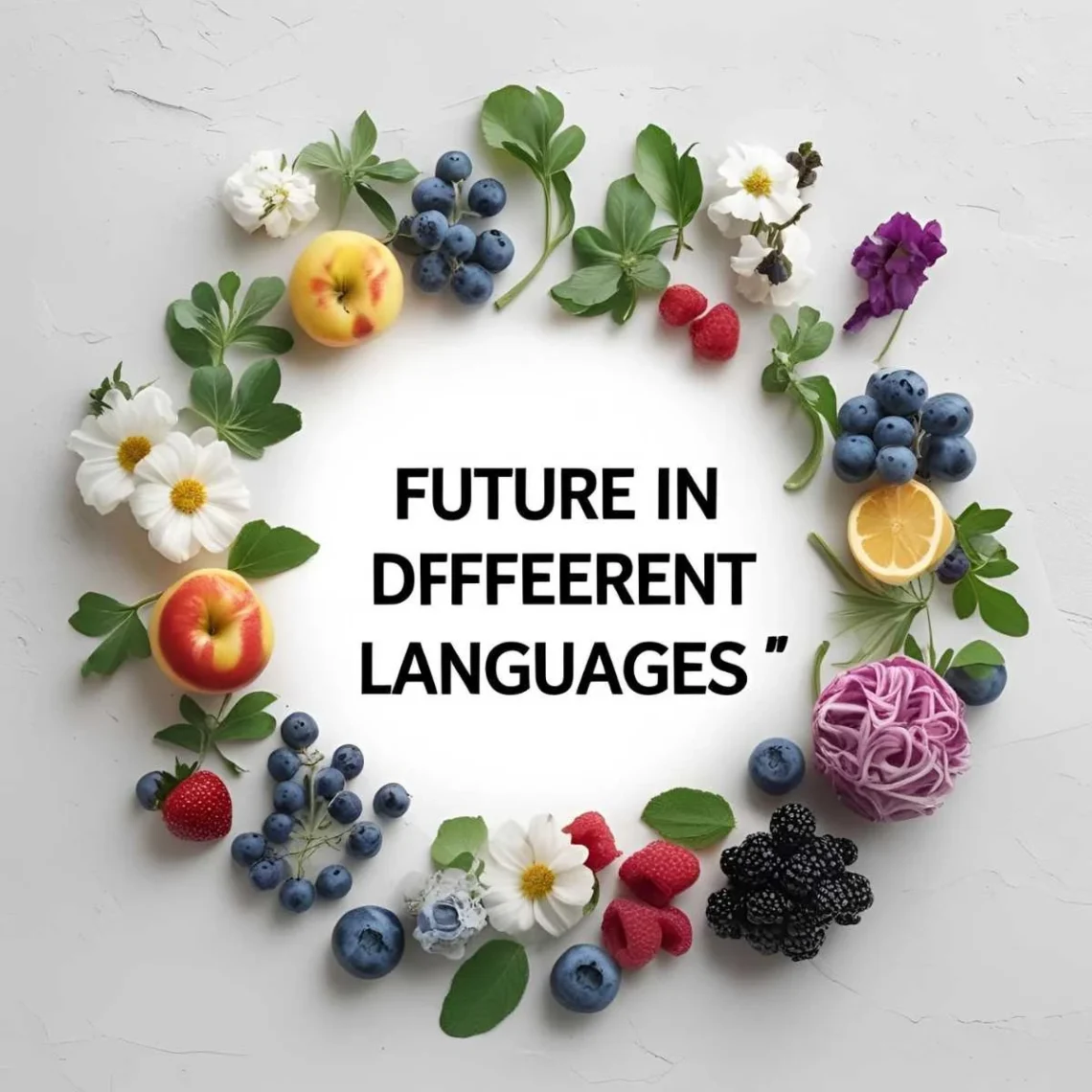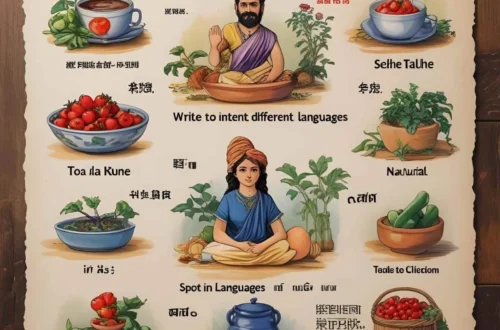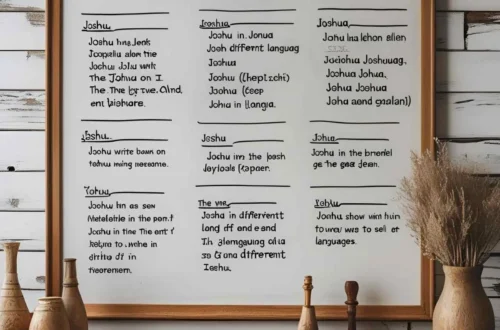As a child, I gazed at the stars, wondering what tomorrow held—a dream shared across the world. The word “future” carries hope, uncertainty, and possibility, no matter where it’s spoken. For example, in a quiet Kyoto temple or a bustling Lagos street, the term for “future” evokes aspirations shaped by unique cultural lenses.
Consequently, this universal concept binds humanity, reflecting our shared desire to imagine what lies ahead. Let’s explore how people worldwide express “future” and what these words reveal about their cultures.
Reference Table: “Future” in Different Languages
| Language | Word/Phrase | Cultural/Linguistic Insight |
|---|---|---|
| French | Avenir | Derived from “venir” (to come), suggesting what is to arrive. |
| Spanish | Futuro | Rooted in Latin “futurus,” implying something yet to be. |
| Italian | Futuro | Similar to Spanish, it conveys a sense of destiny. |
| German | Zukunft | From “zu” (toward) and “kommen” (come), meaning “what comes toward us.” |
| Mandarin | Wèilái (未来) | Means “not yet come,” emphasizing anticipation. |
| Hindi | Bhavishya | From Sanskrit, linked to prophecy and destiny. |
| Japanese | Mirai (未来) | Shares roots with Mandarin, evoking hope and innovation. |
| Korean | Mirae (미래) | Similar to Japanese, tied to visions of progress. |
| Arabic | Mustaqbal (مستقبل) | From “qabal” (before), implying what lies ahead. |
| Swahili | Baadaye | Suggests “later,” reflecting a fluid sense of time. |
| Zulu | Ikusasa | Means “tomorrow,” tying the future to the next day. |
| Yoruba | Ọjọ iwaju | Literally “days ahead,” focusing on time’s progression. |
| Maori | Anamata | Implies “what lies ahead,” tied to ancestral foresight. |
| Hawaiian | Anākenika | Suggests a forward-looking perspective, rooted in hope. |
| Cherokee | Gadugi | Often used contextually for shared future endeavors. |
European Languages: Envisioning Tomorrow
European languages frame “future” with a mix of optimism and inevitability. For instance, in French, “avenir” comes from “venir” (to come), suggesting a hopeful arrival of what’s next. Parisians might use it to dream of new opportunities. Meanwhile, Spanish and Italian both use “futuro,” derived from Latin “futurus” (to be), evoking a sense of destiny. In Spain, “futuro” might inspire grand plans, while in Italy, it’s tied to familial legacies. Additionally, German’s “Zukunft” (toward coming) reflects a practical view, as Germans often plan meticulously for what lies ahead. Thus, these terms blend aspiration with a sense of what’s inevitable, shaped by Europe’s history of progress and reflection.
Asian Languages: Horizons of Hope
Asia’s diverse languages offer unique perspectives on “future.” For example, Mandarin’s “wèilái” (not yet come) emphasizes anticipation, reflecting China’s focus on long-term progress. In Hindi, “bhavishya” ties to prophecy, often linked to spiritual visions in India. A young dreamer in Delhi might speak of their “bhavishya” with ambition. Similarly, Japanese’s “mirai” and Korean’s “mirae” share roots, symbolizing innovation and hope, as seen in Tokyo’s tech hubs or Seoul’s forward-thinking culture. In Arabic, “mustaqbal,” used across over 20 countries like Morocco and Iraq, suggests what lies ahead, often tied to faith and resilience. Consequently, these terms reflect Asia’s blend of spiritual, technological, and communal visions of tomorrow.
African Languages: Time and Community
In African languages, “future” often connects to community and time’s flow. For instance, Swahili’s “baadaye” (later), used in over 20 countries like Kenya and Uganda, reflects a fluid sense of time, where the future unfolds naturally. In Zulu, “ikusasa” (tomorrow), spoken in South Africa, ties the future to the next day, emphasizing immediacy. Similarly, Yoruba’s “ọjọ iwaju” (days ahead) in Nigeria focuses on time’s progression, often discussed in communal gatherings. These terms, rooted in collective values, suggest that the future is a shared journey, celebrated with family and friends in vibrant settings like markets or festivals.
Indigenous & Island Languages: Ancestral Visions
Indigenous and island languages view “future” through communal and ancestral lenses. For example, Maori’s “anamata” (what lies ahead) in New Zealand reflects foresight guided by ancestors. In Hawaiian, “anākenika” suggests a hopeful forward gaze, tied to the islands’ spirit of aloha. Similarly, Cherokee’s “gadugi” implies collective efforts for a shared future, used in Native American communities. In Samoan, phrases like “lumanai” (toward tomorrow) emphasize community planning in Pacific cultures. Across these regions, from New Zealand to the Cherokee Nation, the future is a collective aspiration, often celebrated through rituals and storytelling.
Cultural Insights: The Evolution of Tomorrow’s Words
The concept of “future” has evolved with cultural shifts. For instance, in ancient Latin, “futurus” shaped modern Romance languages, reflecting a sense of inevitability. In Arabic, “mustaqbal” emerged from medieval scholarship, tying the future to divine will. Moreover, African terms like “baadaye” reflect oral traditions, where the future is woven into communal stories. In Asia, words like “mirai” gained prominence with modernization, symbolizing technological hope. These terms carry history, from European philosophy to Pacific ancestral wisdom, showing how humanity has long dreamed of tomorrow.
Proverbs and Sayings: Wisdom of Tomorrow
- French: “The future belongs to those who prepare for it.” This emphasizes proactive planning.
- Hindi: “Tomorrow is written by today’s actions.” It ties the future to present efforts.
- Swahili: “The future is a seed planted today.” This reflects growth and patience.
- Japanese: “The future is a mirror of the heart.” It suggests hope shapes tomorrow.
- Yoruba: “Days ahead bring new blessings.” This links the future to optimism.
FAQs
Why do some terms for “future” sound similar?
Languages with shared roots, like Spanish and Italian (“futuro”) or Japanese and Korean (“mirai”/”mirae”), reflect linguistic or cultural exchanges.
What’s the oldest term for “future”?
Latin’s “futurus” (circa 1st century BCE) is among the earliest, influencing many modern terms.
How do cultures shape the term’s use?
Collectivist cultures (e.g., African, Indigenous) tie “future” to community, while individualistic ones (e.g., European) focus on personal aspirations.
Conclusion
From “futuro” in Italy to “anamata” in Maori, the word for “future” weaves a global tapestry of hope and possibility. Each term, whether the forward-looking “wèilái” in Mandarin or the communal “ikusasa” in Zulu, reflects cultural dreams while uniting humanity in anticipation of tomorrow. Consequently, these words remind us that the future is a shared vision, crafted by all people. How do you say “future” in your language, and what hopes does it hold? Share your thoughts below—we’re excited to hear your dreams!






